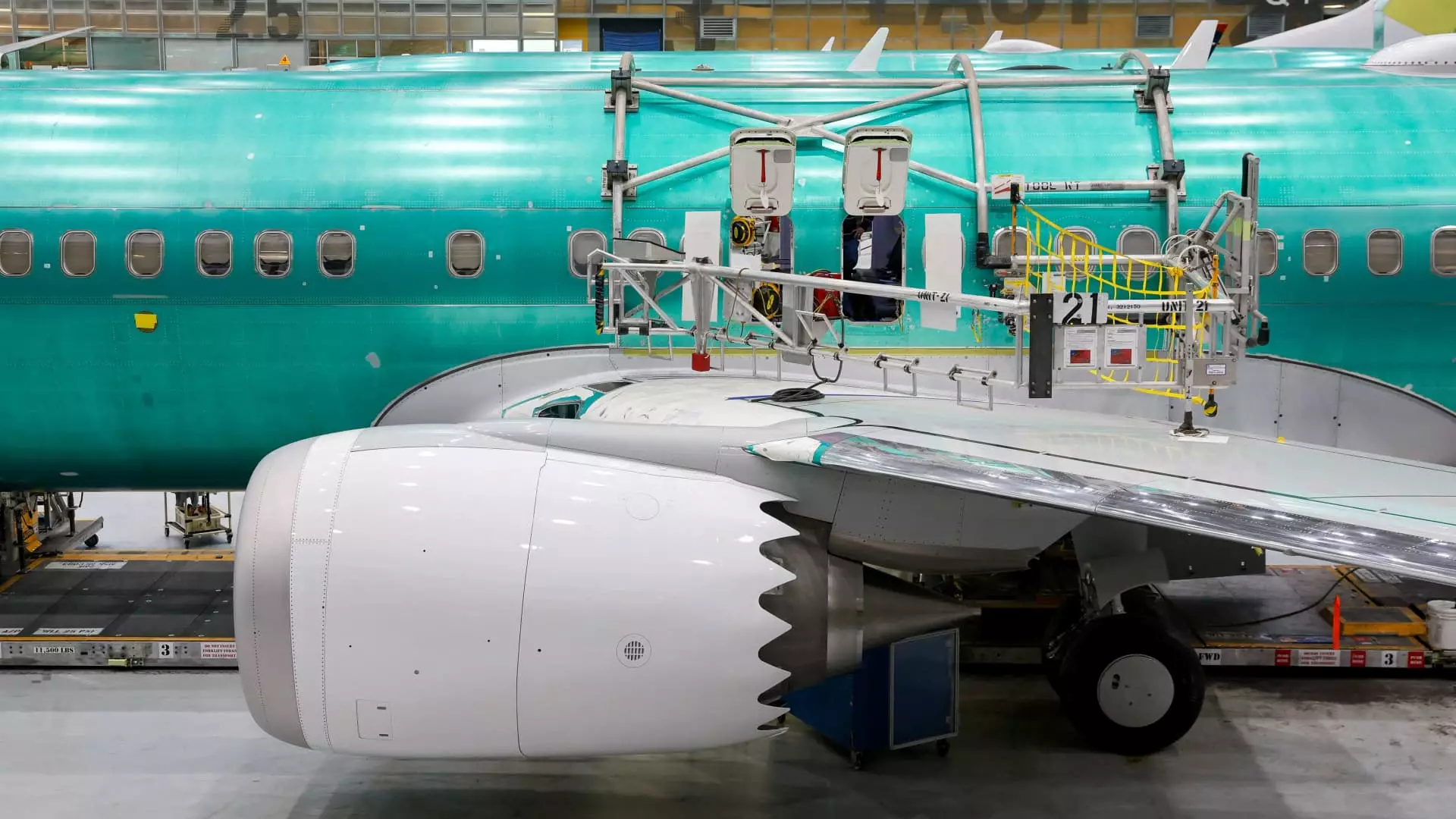Boeing, one of the most recognized names in the aviation industry, finds itself at a critical juncture in its history. Over the past year, the company has faced scrutiny and challenges stemming from safety concerns and production inefficiencies that have threatened its reputation and financial viability. This article delves into Boeing’s current plight, its strategic responses, and the obstacles that lie ahead as it endeavors to rebuild trust and operational integrity.
In late 2022, a serious incident involving an Alaska Airlines Boeing 737 Max 9 underscored alarming safety issues within the company. The midair failure of a fuselage panel raised significant concerns about the manufacturing processes employed by Boeing, revealing that critical components were missing due to oversight at its Renton factory in Washington. Although the aircraft landed safely without serious injuries, the ramifications were severe. Boeing’s stock plummeted by over 30% within a year, while the broader S&P 500 index surged, underscoring a stark misalignment in Boeing’s operational performance compared to other sectors.
This incident was symbolic of a more extensive crisis for Boeing. The fallout from two tragic crashes of the 737 Max in 2018 and 2019, which resulted in 346 fatalities, has had long-lasting effects. Boeing has not posted a profit since 2018, and a staggering loss of over $30 billion since then has placed immense pressure on the company to rectify its operational deficiencies urgently.
Recognizing the need for a profound cultural transformation, Boeing has implemented a series of leadership changes aimed at restoring accountability and fostering a safety-first mentality. The appointment of Kelly Ortberg, a seasoned aerospace executive, as the new CEO in August 2023 signaled a commitment to overhaul the company’s leadership structure. Ortberg’s proactive acknowledgment of the need for change lays the groundwork for a new corporate ethos focused on quality and safety rather than mere profit margins.
Moreover, the Federal Aviation Administration (FAA) has intensified oversight of Boeing operations, limiting production levels of the 737 Max while simultaneously emphasizing the necessity for a cultural shift prioritizing safety above all else. FAA Administrator Mike Whitaker’s remarks that “enhanced oversight is here to stay” reflects an unwavering commitment to ensuring that Boeing adheres to the highest safety standards moving forward.
In response to operational shortcomings, Boeing has embarked on a comprehensive assessment of its manufacturing processes. The company has prioritized random quality audits at its production facilities, particularly focusing on the 737 fuselage assemblies produced by Spirit AeroSystems. By cutting down on manufacturing defects and curtailing “traveled work,” a problematic practice where construction steps are executed out of sequence, Boeing aims to bolster the quality of its aircraft and restore confidence among stakeholders.
Furthermore, employee feedback sessions have provided valuable insights into operational inefficiencies, allowing Boeing management to identify and address longstanding issues within its workforce. This new approach underscores Boeing’s commitment to transparency and accountability, crucial elements in rebuilding its tarnished reputation.
As Boeing strives to stabilize its production rates, it faces significant hurdles including labor relations and competition from Airbus, which has consistently outpaced Boeing in aircraft deliveries. A two-month strike by machinists that concluded late last year presented additional difficulties, temporarily halting jetliner output as workers negotiated improved labor conditions. Although the strike led to a new four-year labor agreement that included significant pay raises, it also highlighted vulnerabilities in Boeing’s operational framework that need addressing to avoid similar disruptions in the future.
As the company continues its recovery trajectory, Ortberg has articulated the need for focused operational management. By cutting 10% of its workforce and concentrating on core business areas, Boeing aims to achieve a more streamlined and effective production model that will facilitate timely and quality aircraft deliveries.
In light of the substantial challenges Boeing faces, a cautious optimism permeates discussions about its recovery. While recent strategic shifts indicate a commitment to restoring quality and safety, the true measure of success will lie in execution. Industry leaders, like Bob Jordan of Southwest Airlines, express hope that Ortberg’s approach signifies a fundamental change rather than a temporary fix.
Boeing’s path to recovery is fraught with risks and requires sustained focus on improving production efficiency and restoring corporate integrity. The stakes are high, yet with a renewed emphasis on safety, cultural change, and operational excellence, Boeing may yet reclaim its position as a leader in the aviation industry while safeguarding the trust of its customers and stakeholders.


Leave a Reply